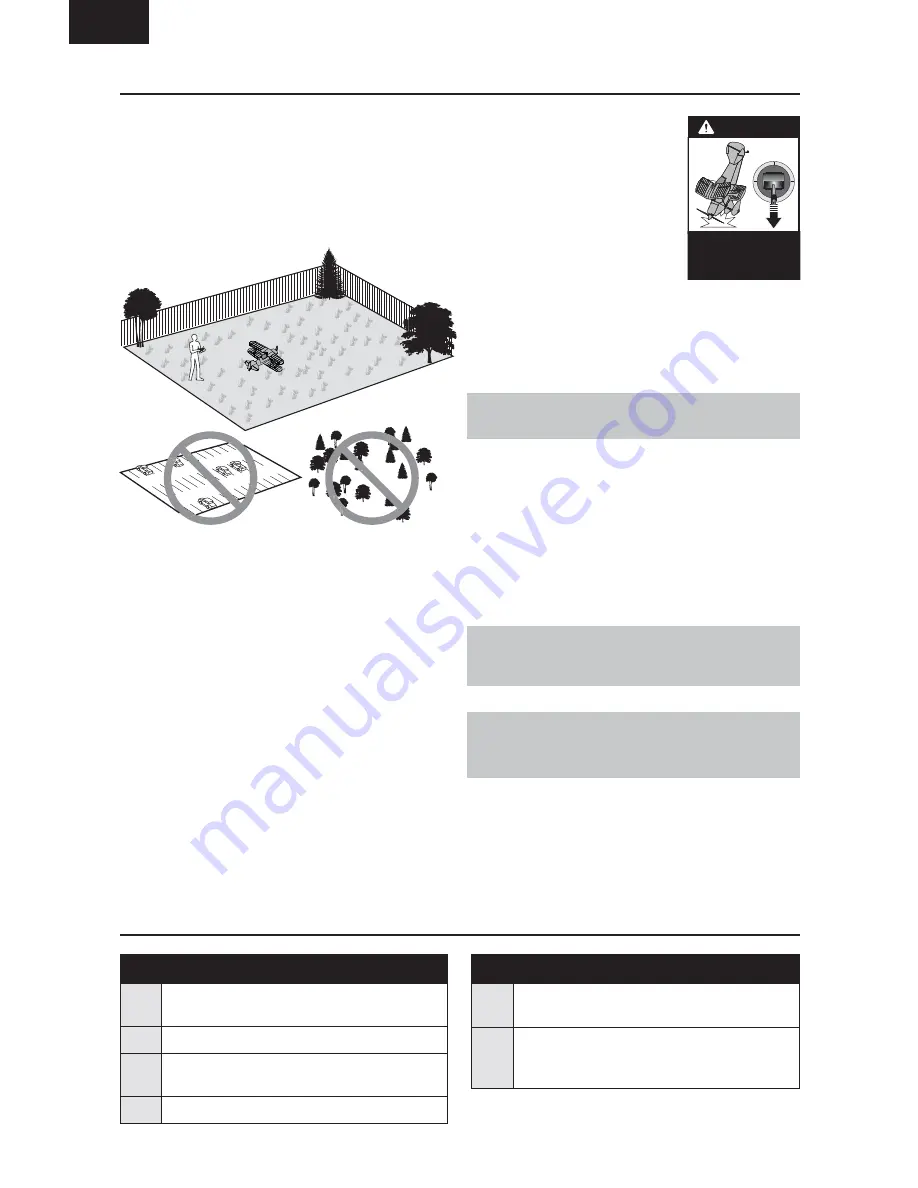
8
EN
Post Flight Checklist
1.
Disconnect the fl ight battery from the ESC
(Required for safety and battery life).
2.
Power OFF the transmitter.
3.
Remove the fl ight battery from the
aircraft.
4.
Recharge the fl ight battery.
5.
Store the fl ight battery apart from the
aircraft and monitor the battery charge.
6.
Make note of the fl ight conditions and
fl ight plan results, planning for future
fl ights.
We recommend fl ying your aircraft outside in calm
conditions. Always avoid fl ying near houses, trees,
wires and buildings. You should also be careful to
avoid fl ying in areas where there are many people,
such as busy parks, schoolyards or soccer fi elds.
Consult local laws and ordinances before choosing
a location to fl y your aircraft.
Takeoff
Place the aircraft in position for takeoff (facing into
the wind if fl ying outdoors). Set dual rates to low
position and gradually increase the throttle to ¾ to
full and steer with the rudder. Pull back gently on
the elevator and climb to check trim. Once the trim
is adjusted, begin exploring the fl ight envelope of
the aircraft.
Landing
Land into the wind. This is very important for this
model. Fly the aircraft to approximately 6 inches
(15cm) or less above the runway, using a small
amount of throttle for the entire descent. Keep the
throttle on until the aircraft is ready to fl are. During
fl are, keep the wings level and the airplane pointed
into the wind. Gently lower the throttle while pulling
back on the elevator to bring the aircraft down on
all three wheels.
Failure to lower the throttle stick
and trim to the lowest possible
positions during a crash could
result in damage to the ESC in
the receiver unit, which may
require replacement.
This aircraft is equipped with
Over Current Protection (OCP).
This feature protects the ESC
from overheating. OCP stops the
motor when the transmitter throttle is set too high
and the propeller cannot turn. The OCP will only
activate when the throttle stick is positioned just
above 1/2 throttle. After the ESC stops the motor,
fully lower the throttle to re-arm the ESC.
NOTICE:
Crash damage is not covered under the
warranty.
Repairs
Repair the aircraft using foam-compatible CA
(cyanoacrylate adhesive) or clear tape.
Only use
foam-compatible CA
, as other types of glue can
damage the foam. When parts are not repairable,
see the Replacement Parts List for ordering by
item number.
For a listing of all replacement and optional parts,
refer to the list at the end of this manual.
NOTICE:
Use of foam-compatible CA accelerant on
your aircraft can damage paint. DO NOT handle the
aircraft until the accelerant fully dries.
NOTICE:
When you are fi nished fl ying, never leave
the aircraft in direct sunlight or in a hot, enclosed
area such as a car. Doing so can damage the foam.
Flying Tips and Repairs
Always
decrease throttle at
propeller strike.
CAUTION


































